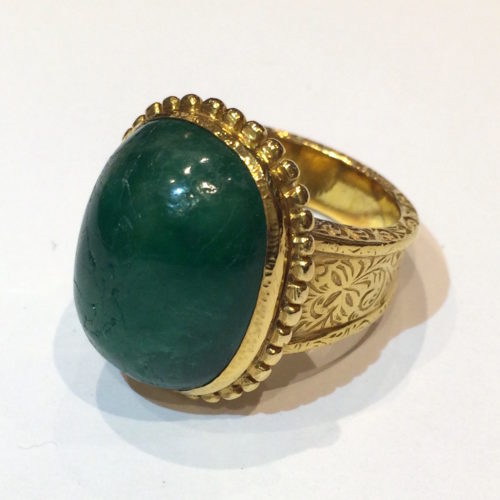Product Description
Bhutan natural large cabochon emerald ring (approx. 37 carats TW, G.I.A Certificate, indications of clarity enhancement) in 20-22K gold with decorative incised details and a gold beaded bezel, marked, c.1900



Bhutan natural large cabochon emerald ring (approx. 37 carats TW, G.I.A Certificate, indications of clarity enhancement) in 20-22K gold with decorative incised details and a gold beaded bezel, marked, c.1900
FRENCH ART NOUVEAU
JULIEN CAUSSE attr. (1869-1914) Bourges, France
Bronze and frosted glass grape cluster and vine lamp c. 1900
L: 24″ x dia (grape cluster): 7″
Julien Causse was born in Bourges, France and worked from 1890 – 1914. He studied in Paris under Falguiére and exhibited at The Salon des Artists Francais in the 1890s, obtaining honourable mentions in 1882 and 1900 and a third class medal in 1893. He also took part in the exposition Universelle of 1900.
